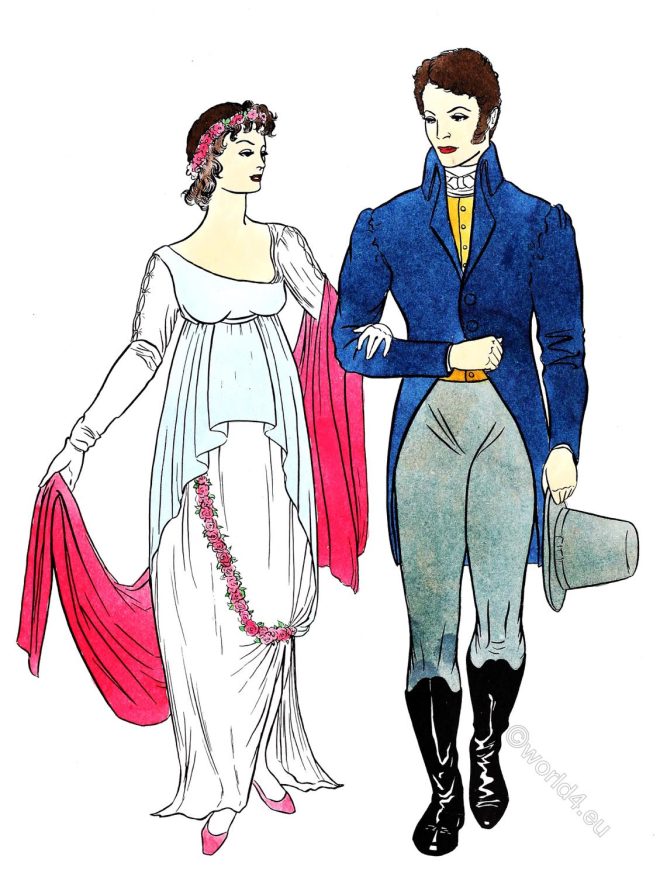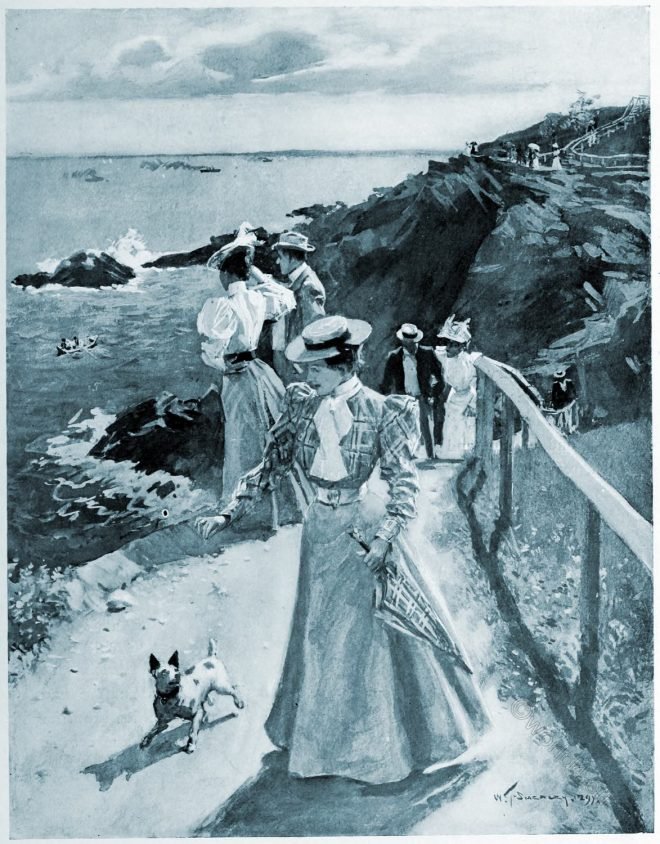Mughal gardens in Srinagar, Kashmir. Gardens of the Great Mughals by Constance Mary Villiers Stuart. Nishat Bagh, Shalimar Bagh.
Category: Fashion History
Court Toilets & Ceremonial Robes. France 16th, 17th century.
History of Costume by Auguste Racinet. Costumes of the nobility in the time of Henry IV of France. 16th, 17th century. Court Toilets & Ceremonial Robes.
French directoire. Neoclassical fashion in the transition to the Empire.
French directoire. Neoclassical fashion in the transition to the Empire. 1789-1800.
St. Catherine of Alexandria and St. Agnes of Rome.
St. Catherine of Alexandria holding in her hands instruments of her punishment. On the right is St. Agnes, and a lamb, the emblem of her innocence and gentleness.
Assyrian king and his archer. Their characteristic costume.
The Assyrians were warriors, as their costume shows, with its heavily ornate, barbaric splendour. They wore much more jewellery than the Persians.
The Cliffs at Nahant, North Shore, Massachusetts, 1892.
This place was famous in the olden time as one of the favorite haunts of the great sea-serpent.
Royal gloves of Henry VIII. Tudor King of England.
One of the most beautiful pair of gloves probably in existence, and fortunately in a fine state of preservation.
Anglo-Saxon dress, ornaments and relics of gold and bronze.
The great love of the Saxons for display in dress and ornament led to a very, remarkable development of artistic skill in fashioning and decorating articles of jewelry, which were worn by men in greater profusion than by women.
Constance of Castile, Duchess of Lancaster with horned head-dress.
Constance of Castile (1354 – 24 March 1394) the second wife of John of Gaunt Duke of Lancaster with horned head-dress.
Orders of monks and nuns. Historical religious habit of the Orient.
These oriental monastic and nun’s habit date back to the earliest times of Christianity.










